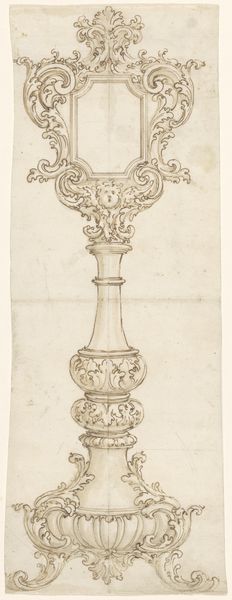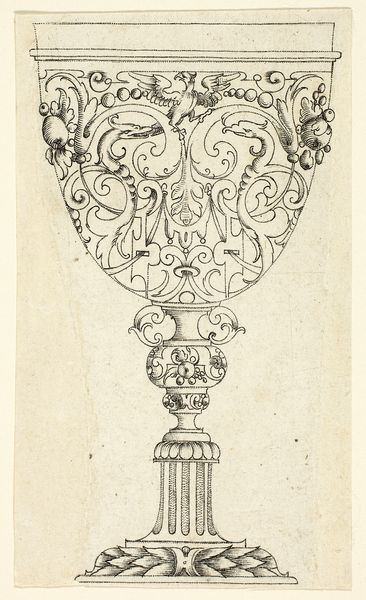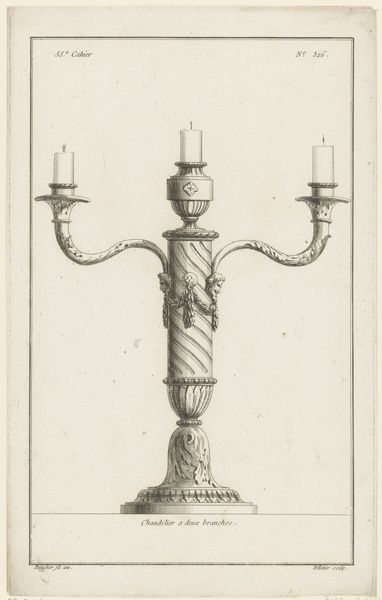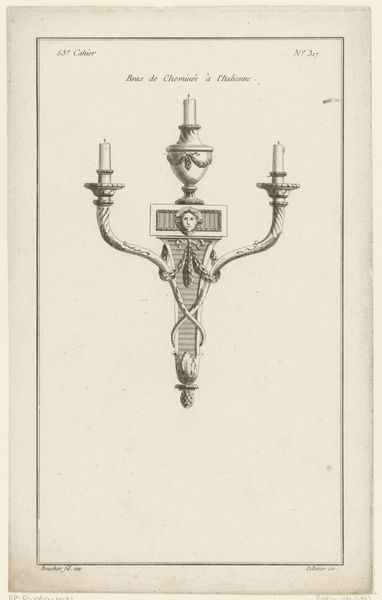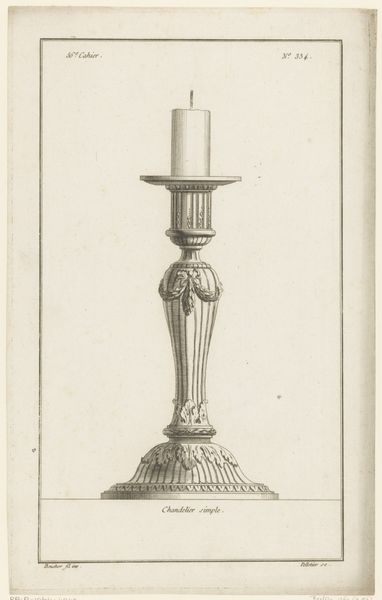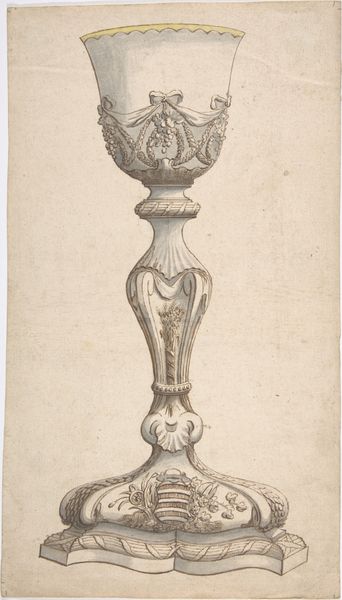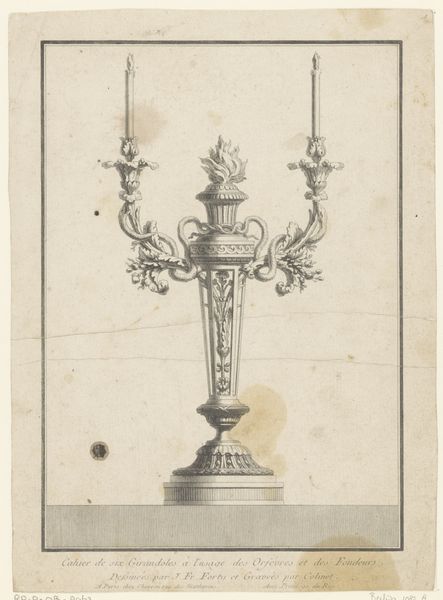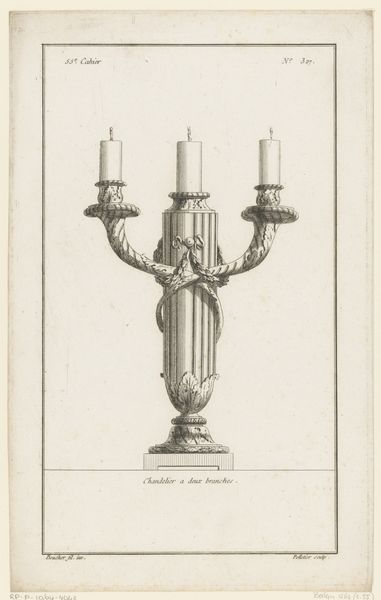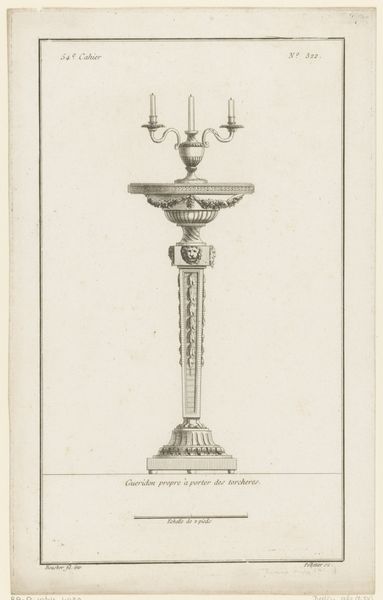
Dimensions: height 270 mm, width 148 mm
Copyright: Rijks Museum: Open Domain
This is Claude Dominique Vinsac’s “Girandole met caduceus,” a design for a candle holder, made in France at an unknown date. The artist was born in 1749. The print reflects the period's obsession with classical antiquity, reviving its motifs in a new, decorative style. The central caduceus, a symbol associated with Hermes, the Greek god of commerce, might seem out of place on a candle holder. But it highlights the 18th-century fusion of trade, artistry, and elite culture. This candelabra design speaks volumes about the social conditions of artistic production. Vinsac, like many artists of his time, worked under the patronage system, relying on commissions from wealthy clients or institutions. The Rijksmuseum itself, which now houses this print, embodies the institutional structures that shape our understanding and appreciation of art. To truly understand this artwork, we might delve into period pattern books, guild records, and the biographies of its potential patrons. Art is contingent on social and institutional contexts.
Comments
No comments
Be the first to comment and join the conversation on the ultimate creative platform.

